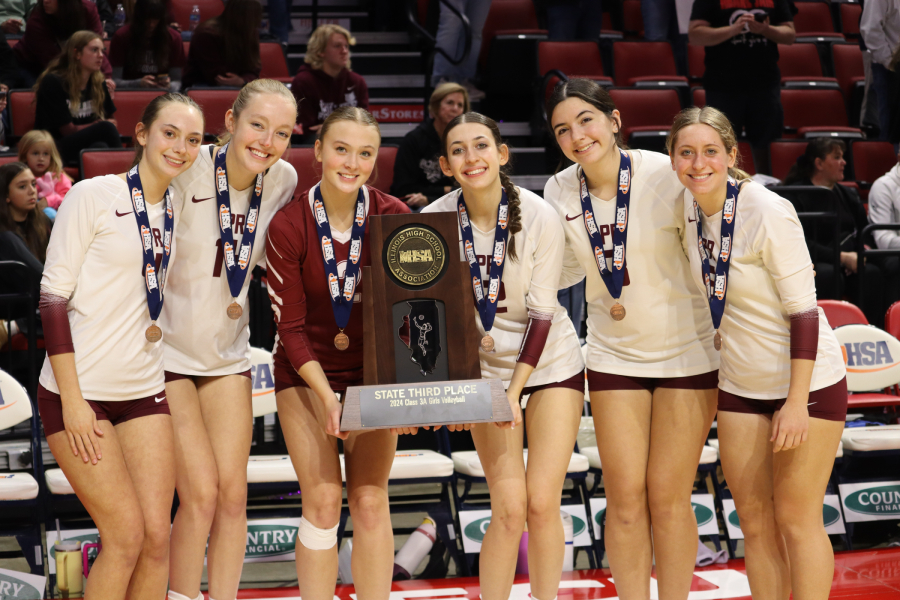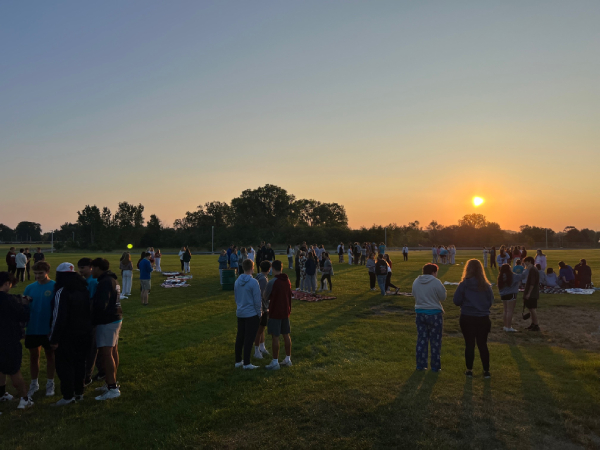While the words “Advanced Placement” may add volume and sparkle to a competitive college application, many students have to wonder: are AP classes worthwhile?
Mr. Pellikan, AP U.S. History teacher, believes that through AP classes “kids are able to mature as thinkers, time managers, students, and people overall.”
For many students, these classes are not just about the potential college credit and the GPA boost, but also about the advantageous opportunity to experience the rigor and intensity of an actual college level class. After all, Mrs. Brockland notes that “college classes will be drastically different from [typical] classes in high school, and students should take AP classes to find out how to handle a more challenging workload before moving to college, throwing away thousands of dollars, and learning the hard way.”
Prairie Ridge currently has the highest number of students enrolled in the most AP classes in the entire district. These students range from individuals who have been following the honors track since freshman year to individuals genuinely interested in certain subjects.
Mr. Bleile believes “the honors track is not as important as the maturity level, study habits, and motivation of the individual.” Mrs. Brockland and Mr. Pellikan agree that any student willing to put in the necessary time and effort should try AP courses and Ms. Orsi, describes the AP curriculum as “challenging… but not impossible.”
Senior Helen Bengtson is a student who knows that AP courses “are sometimes a lot of extra work, but ultimately when you put in hard work and see good results come from it, it’s worth it.”
Senior Aditi Das, like many others, signed up for her AP classes, wanting to “prepare for the future and for college.” For her and other AP students, the $87 per exam is a small price to pay for college credit, improved study habits and problem solving skills, discipline, and a stimulating classroom environment.
Although associated with endless benefits and advantages, AP classes also come with a fair share of complaints from various students and teachers about the sheer volume of learning and the test-intensive learning environment. Mr. Pellikan and Ms. Orsi believe that comprehensive learning and in-depth analysis are often sacrificed for the sake of test preparation. Students are often stressed out and overwhelmed trying to juggle extracurriculars, responsibilities, and countless pages of assignments each night.
Students seem to prefer having smaller AP class sizes. “My favorite class is AP Biology because we have 8 people. We fool around sometimes but most of the time we have a focus and we support and help each other understand the material,” said senior Aditi Das.
Larger class sizes could bring more discussion, more ideas, more opportunities for students to learn from each other. However, it also allows for more disruption and chaos, hindering students’ ability to fully learn critical concepts. Senior Casey Hanley believes that some AP classes put “all of the responsibility for the material . . . upon the student.”
The students’ rates of success in AP classes at PR prove these courses manageable. In AP Biology, last year, 75% of the students who took the test received a 4 or above; in Mrs. Brockland’s AP Chemistry class, every student received a 3 or higher; in Mr. Pellikan’s AP US History class, the average score on the AP exam was 4.07; in Ms. Orsi’s AP Calculus BC and AP Statistics classes, over 80% of students have earned a 4 or 5 in the past 6 years.
Ultimately teachers argue that AP courses should not be looked at as a daunting and overwhelming task, but a challenging and rewarding experience. Ms. Orsi explains, “you may learn to overcome adversity for the first time in your academic career.”






